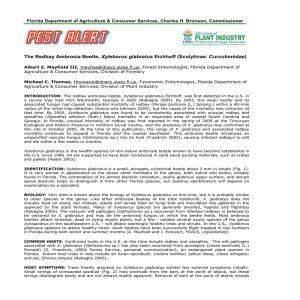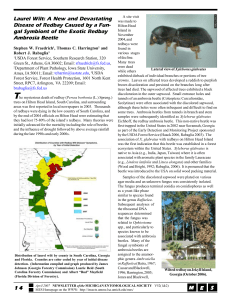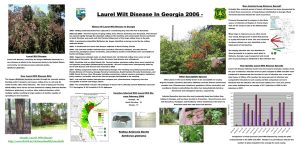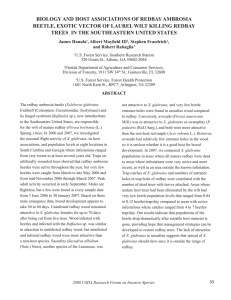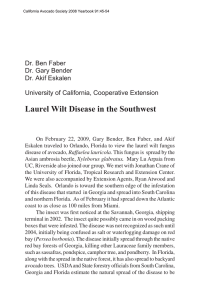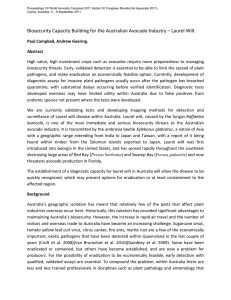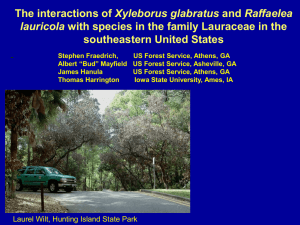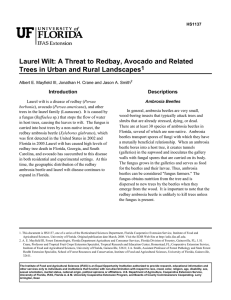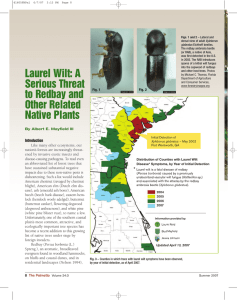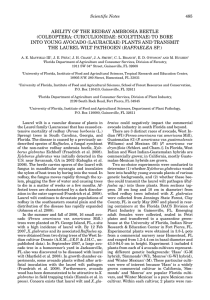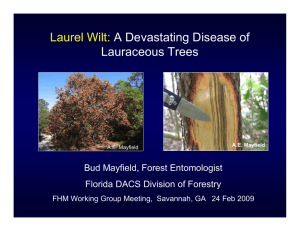Towards the Development of a Laurel Wilt Persea borbonia Marc Hughes
advertisement
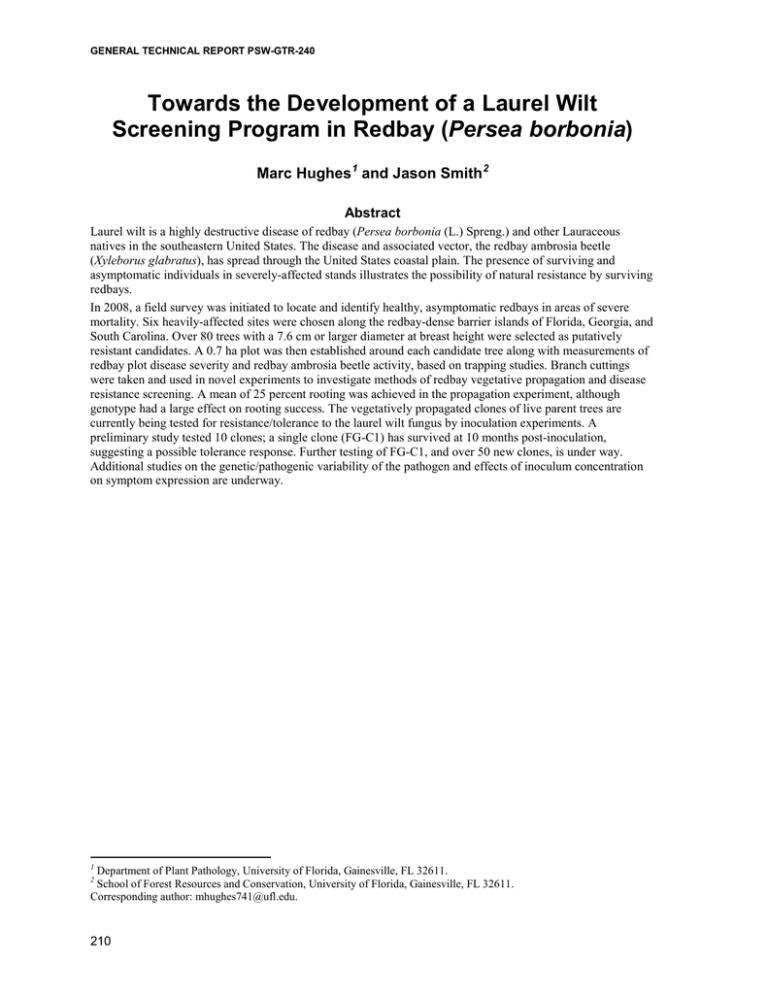
GENERAL TECHNICAL REPORT PSW-GTR-240 Towards the Development of a Laurel Wilt Screening Program in Redbay (Persea borbonia) Marc Hughes 1 and Jason Smith 2 Abstract Laurel wilt is a highly destructive disease of redbay (Persea borbonia (L.) Spreng.) and other Lauraceous natives in the southeastern United States. The disease and associated vector, the redbay ambrosia beetle (Xyleborus glabratus), has spread through the United States coastal plain. The presence of surviving and asymptomatic individuals in severely-affected stands illustrates the possibility of natural resistance by surviving redbays. In 2008, a field survey was initiated to locate and identify healthy, asymptomatic redbays in areas of severe mortality. Six heavily-affected sites were chosen along the redbay-dense barrier islands of Florida, Georgia, and South Carolina. Over 80 trees with a 7.6 cm or larger diameter at breast height were selected as putatively resistant candidates. A 0.7 ha plot was then established around each candidate tree along with measurements of redbay plot disease severity and redbay ambrosia beetle activity, based on trapping studies. Branch cuttings were taken and used in novel experiments to investigate methods of redbay vegetative propagation and disease resistance screening. A mean of 25 percent rooting was achieved in the propagation experiment, although genotype had a large effect on rooting success. The vegetatively propagated clones of live parent trees are currently being tested for resistance/tolerance to the laurel wilt fungus by inoculation experiments. A preliminary study tested 10 clones; a single clone (FG-C1) has survived at 10 months post-inoculation, suggesting a possible tolerance response. Further testing of FG-C1, and over 50 new clones, is under way. Additional studies on the genetic/pathogenic variability of the pathogen and effects of inoculum concentration on symptom expression are underway. 1 Department of Plant Pathology, University of Florida, Gainesville, FL 32611. School of Forest Resources and Conservation, University of Florida, Gainesville, FL 32611. Corresponding author: mhughes741@ufl.edu. 2 210
